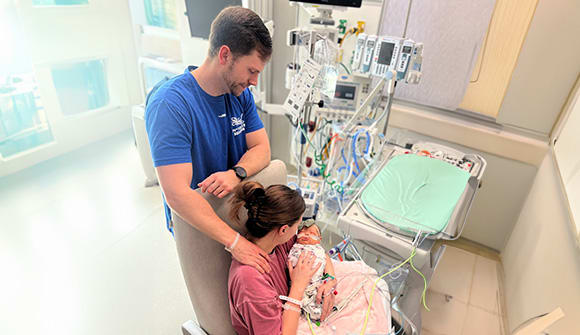Keeping kids in class
The CDC’s new guidelines for COVID-19 exposures at school.
Article Author: Katie McPherson
Article Date:

Starting a new school year means getting the kids back into a bedtime routine, going supply shopping, and for the last two years, checking what COVID-19 precautions are currently in place at your child’s school. How many masks should you toss in the backpack? Do they need disinfectant wipes? What about their own hand sanitizer?
This year, the Centers for Disease Control and Prevention (CDC) wants kids to return to school and stay in class consistently. Helping kids return to normal life, health experts hope, will help ease the strain on children’s mental health nationwide. On August 11, 2022, the CDC released new guidelines for how parents and schools should handle COVID-19-exposed students and those who test positive.
So, what’s new?
Previously, students who had been exposed to COVID-19 were required to stay home and quarantine. Now, students who have been exposed but are asymptomatic can still come to class. Those children should wear a mask for 10 days to help avoid spreading the virus and take a COVID-19 test five days after being exposed.
However, if your child does have COVID-19, the guidelines remain the same: stay home for at least five days, or until fever and other symptoms have improved. When returning to school, the student should still mask up until day 10.
The CDC still recommends masking in class if COVID-19 cases are surging in your area, but leaves the decision on day-to-day rules up to schools.
Why the change?
The nation’s public health agency is trying to help school-age kids have a successful school year and stay in class as much as they can, which is possible now that herd immunity is higher.
“This change in guidelines is driven by the fact that many people are immune after being vaccinated or from a previous infection, and it’s important for children to have normalcy,” said Mobeen Rathore, MD, chief of pediatric infectious disease and immunology at Wolfson Children’s Hospital. “The current strains are less severe than the delta variant. They’re still circulating quite a bit, but it’s important that they’re not causing as severe a disease.”
The ever-changing guidelines around COVID-19 driven by new discoveries about the virus have been a source of uncertainty throughout the pandemic. And, in some cases, health experts didn’t always agree with the latest guidance. In this case, Dr. Rathore feels the CDC’s new rules were written with kids’ best interest in mind.
“I think this is a good way to move toward as much normalcy as possible,” he said.
What does this mean for parents?
While you’ll have fewer dirty masks to wash each week, it’s still important for parents to monitor children for any signs and symptoms of COVID-19 (like fever, fatigue, cough, or loss of taste or smell).
“If the child is sick, especially with COVID-19, he or she should stay home and the parent should call their pediatrician,” said Dr. Rathore. “The same goes for those who test positive. If they know they’ve been exposed, which isn’t always the case, I would say the child can wear masks and test to be sure.”
Most importantly, parents can support the transition back to a normal school year by getting kids vaccinated, if they haven’t already, Dr. Rathore said.
“The new guidelines really count on students having more immunity. The best way of getting immunity is to get vaccinated, so I encourage parents to continue getting kids vaccinated and boosted as needed.”
For up-to-date, accurate information about COVID-19 vaccines for children, including vaccination locations, visit wolfsonchildrens.com/covid19. For more information about COVID-19 vaccines for adults and children, visit baptistjax.com/covid19vaccine. To find a pediatrician for your child, request an appointment online.
Reference: CDC’s Operational Guidance for K-12 Schools and Early Care and Education Programs



